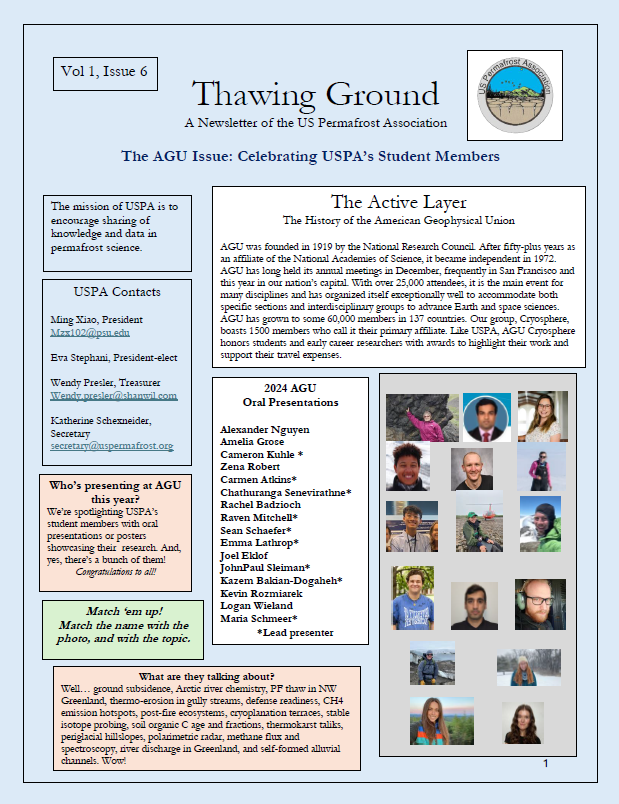- Home
- Membership
- Publications
- Activities & Programs
- Resources
- Login
Mission StatementThe United States Permafrost Association's (USPA) purpose is to encourage scientific and engineering investigations of permafrost and to share knowledge and data related to permafrost. Ground that has been frozen for two or more consecutive years is known as permafrost. Permafrost underlies more than a quarter of the land surface in the Northern Hemisphere and is an important component of global climate and human infrastructure. The goal of the USPA is to promote awareness of permafrost among the public and to train new generations of scientists and engineers to work in fields related to permafrost science and engineering. The USPA has been working to form a strong national organization of scientists and engineers interested in permafrost research. The USPA coordinates with the International Permafrost Association (IPA) to host the International Conference on Permafrost (ICOP) every four years, as well as more frequent Regional Conferences on Permafrost (RCOP). Join the USPA Today!USPA Newsletter November 2024Check out our sixth issue of the USPA newsletter!
In this issue, we are highlighting on the USPA student members who are presenting or have contributed to presentations at AGU, both oral and poster. We couldn't be more proud of them all. |






















